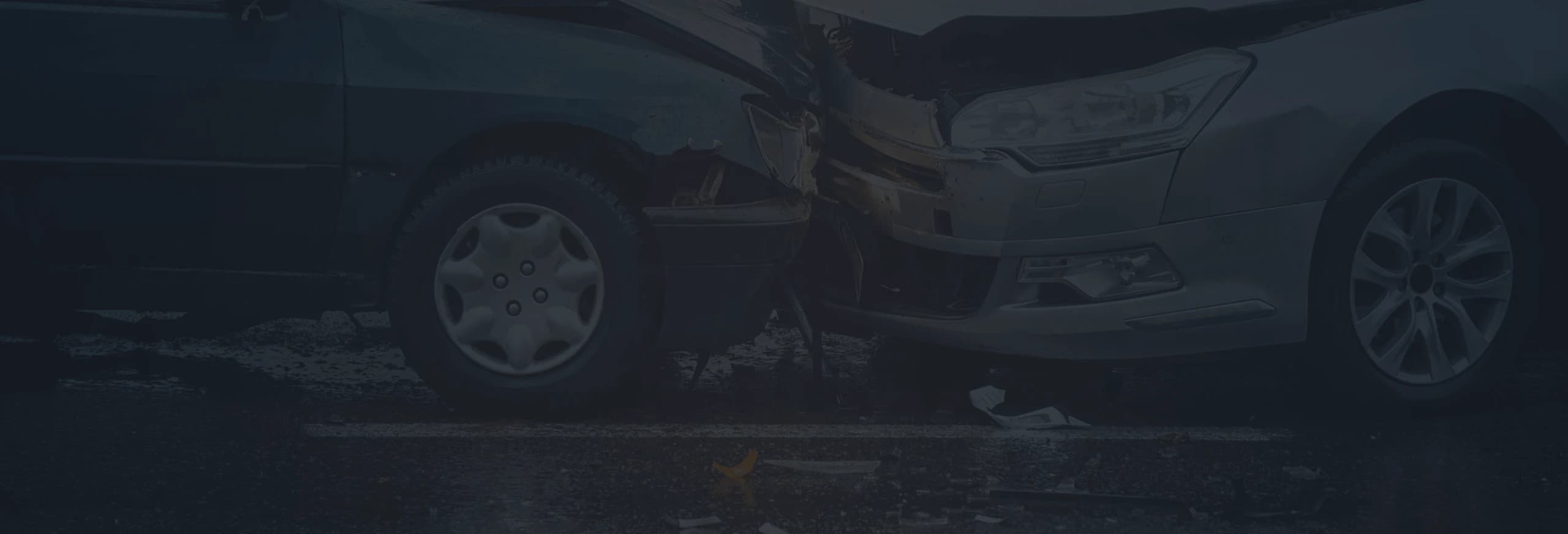
Common Myths About Personal Injury Lawsuits

Why Misconceptions Persist About Personal Injury Cases
When people hear about personal injury lawsuits, they often rely on secondhand stories, exaggerated news reports, or television portrayals. These sources create persistent myths about how the legal process actually works. Many accident victims delay or avoid filing claims altogether because of misinformation about what pursuing compensation entails.
In reality, personal injury law exists to help people rebuild their lives after suffering harm due to someone else's negligence. It isn't about exploiting the system—it's about accountability and fairness. Understanding how these cases really work can make the process less intimidating and help victims make informed decisions about protecting their rights. A qualified personal injury lawyer can provide the clarity and guidance needed to separate fact from fiction and ensure a fair outcome.
Myth 1: "If It Was an Accident, No One Is Responsible"
One of the most common misconceptions is that accidents are simply unavoidable events with no one to blame. However, most injuries occur because someone failed to act with reasonable care—a central concept known as the duty of care. Every person has a legal obligation to act in a way that prevents harm to others. When that duty is breached, even unintentionally, the responsible party can be held liable for the resulting damages.
For instance, a driver distracted by a phone or a property owner who ignores a safety hazard may not have intended harm, but they still violated their duty to act responsibly. Establishing this duty and proving that it was breached are key steps in any case. Understanding how this legal obligation functions is essential to recognizing accountability, as explained through the broader idea of duty of care in personal injury law, where safety and responsibility form the basis of liability.
Myth 2: "You Don't Need a Lawyer—Insurance Will Handle It"
Another common misconception is that insurance companies will automatically offer fair compensation after an accident. The truth is that insurers often aim to minimize payouts, not maximize justice. They may dispute liability, undervalue injuries, or pressure victims into accepting low settlements before the full impact of their injuries is known.
Having an experienced attorney makes a significant difference. A skilled advocate knows how to interpret medical records, calculate future expenses, and negotiate effectively. They understand how to present evidence that supports full compensation rather than the minimal amount insurers prefer to pay. The guidance of an experienced professional often proves to be the key to achieving the best possible outcome, much like what is described in personal injury lawyer – key to maximizing your case, where preparation and expertise lead to stronger results for clients.
Myth 3: "If You Were Partly at Fault, You Can't Recover Anything"
Many people believe that if they share any blame for an accident, they cannot receive compensation. In reality, most states follow comparative fault rules, which allow victims to recover damages even if they were partially responsible for the incident. The amount they receive is simply reduced by their percentage of fault.
For example, if a driver is found 20% at fault for a crash and the total damages are $100,000, they could still recover $80,000. What matters most is proving that the other party's negligence contributed significantly to the harm. Understanding how responsibility is shared and how fault affects the settlement amount is crucial to securing fair compensation. This principle is captured in the practical application of how comparative fault can impact your settlement, which explains how the law accounts for shared responsibility while still protecting victims' rights.
Myth 4: "Negligence and Recklessness Are the Same Thing"
People often use the words "negligence" and "recklessness" interchangeably, but legally, they represent two different levels of wrongdoing. Negligence refers to carelessness or failure to act with reasonable caution, while recklessness involves a conscious disregard for the safety of others. Both can result in injury, but the level of fault and potential damages differ.
Negligence might involve a driver running a stop sign by mistake, whereas recklessness could mean speeding through a crowded intersection while aware of the danger. Recognizing this difference is important for understanding how courts evaluate intent, responsibility, and compensation. The distinction becomes especially meaningful in severe injury cases, where recklessness can lead to punitive damages intended to punish egregious conduct. This nuanced understanding of intent and care is reflected in the difference between negligence and recklessness, where awareness of risk separates ordinary carelessness from willful disregard.
Myth 5: "It's Easy to Prove That Negligence Caused the Injury"
Proving that someone's negligence caused an injury is rarely simple. The legal concept of causation requires showing not only that the defendant was careless but also that their actions directly led to the harm suffered. Victims must demonstrate that the injury would not have occurred "but for" the defendant's behavior and that the harm was a foreseeable result of that conduct.
For example, if a person slips on a wet floor in a store, the injured party must show that the hazard existed, that the property owner knew or should have known about it, and that the fall was a direct consequence of this negligence. Establishing this link is vital to securing compensation and ensuring justice. The importance of this causal connection between conduct and harm is illustrated in understanding causation: linking negligence to your injury, which shows how proof of this relationship anchors every successful claim.
Myth 6: "Personal Injury Lawsuits Take Forever and Aren't Worth It"
While some personal injury cases can take time, many are resolved through negotiation without ever going to court. The duration depends on factors such as the complexity of the case, the severity of injuries, and the willingness of the insurance company to offer fair compensation. The goal is always to achieve justice efficiently without sacrificing the quality of the outcome.
Victims who work with experienced attorneys often find the process far less burdensome. Their legal teams manage communication, documentation, and negotiation—allowing clients to focus on recovery. Far from being a drawn-out ordeal, a well-managed personal injury case can bring closure and financial stability to those affected by another's negligence.
Myth 7: "You Can File a Claim Anytime After an Accident"
Perhaps the most dangerous misconception is that there's no rush to file a personal injury claim. In reality, every state imposes strict statutes of limitations, which set the legal deadline for initiating a lawsuit. Missing this window usually means forfeiting the right to seek compensation entirely.
The clock typically starts on the date of the injury, though there are exceptions for cases where the damage wasn't immediately discovered. Acting promptly ensures that evidence remains intact and witness testimony remains fresh. Those who wait too long risk losing their opportunity for justice altogether.
A timely approach not only strengthens the case but also protects one's legal rights—a principle emphasized throughout personal injury law. Acting quickly is especially important when negotiating with insurers or proving causation, as delays can create unnecessary challenges.
Dispelling Myths to Empower Victims
Misinformation can discourage people from seeking the justice and support they deserve after an injury. By understanding the realities of personal injury law—how duty of care defines responsibility, how comparative fault distributes liability, and how causation links actions to harm—victims are better equipped to take informed action.
The truth is that personal injury claims are not about opportunism; they are about fairness, accountability, and recovery. Working with professionals who understand these principles ensures that victims are treated with respect and that negligent parties are held responsible. When approached with the right guidance, a personal injury claim becomes not a burden, but a path to rebuilding what was lost.
Blog Posts:

The Role of Expert Witnesses in Injury Litigation
Why Expert Witnesses Matter in Personal Injury Cases In personal injury litigation, facts alone are often not enough. While evidence like medical records, photographs, and witness statements paint part of the picture, juries and insurance companies frequently need context and explanation to understand the full scope of an injury and its impact. This is where expert witnesses play a pivotal role. Expert witnesses are professionals—often doctors, engineers, economists, or accident reconstruction specialists—who provide testimony based on their specialized knowledge. Their objective is not to advocate for one side but to clarify complex issues that require professional interpretation. In many cases, their opinions help bridge the gap between evidence and understanding, making them critical to achieving fair compensation.

How Insurance Companies Evaluate Injury Claims
How the Evaluation Process Really Works When you file a personal injury claim, the insurance company begins a process that is anything but simple. Behind every offer or denial, there's a calculated evaluation designed to protect their bottom line. Insurers use data-driven methods, past claim outcomes, and internal guidelines to assess how much—if anything—they believe your case is worth. The goal of the insurance adjuster is straightforward: to settle your claim for as little as possible while closing the file quickly. They'll review your medical records, accident details, and even statements you've made to determine liability and damages. The more organized and detailed your claim presentation, the harder it is for them to undervalue it.

The Dangers of Handling a Personal Injury Case Without Legal Help
Understanding What's at Stake After an accident, it's natural to want to resolve things quickly. Medical bills begin piling up, your work may be disrupted, and insurance adjusters often seem eager to "help." Many people believe they can handle their personal injury claim on their own—especially if the situation seems straightforward. But personal injury law is complex, and even minor missteps can lead to significant financial loss. Without professional guidance, you may underestimate your claim's value, miss critical deadlines, or make statements that insurers later use against you. The legal process is designed to protect both sides, and insurance companies have experienced professionals working to limit payouts. Without an equally skilled advocate on your side, you're at a clear disadvantage. That's why consulting a personal injury lawyer early in the process is often the difference between fair compensation and a costly mistake.

When Should You Switch to a Different Injury Lawyer?
Knowing When It's Time for a Change Choosing the right attorney after an accident is one of the most important decisions you'll make in your recovery journey. However, not every lawyer-client relationship is a perfect fit. Sometimes, despite your best efforts, you may realize that your current representation isn't meeting your expectations. Whether it's poor communication, lack of progress, or a sense that your case isn't being handled effectively, recognizing when to switch attorneys can make all the difference in the outcome of your claim. Switching to a new personal injury lawyer doesn't mean starting over from scratch—it means taking control of your case and ensuring it receives the attention and effort it deserves. Understanding what to expect from your legal representation can help you identify the warning signs that it might be time for a change.
Get an agent on the line in seconds
Responsive
Legal Assistance
Our personal injury attorneys advocate for the funds necessary to cover bills, secure medical treatment, recoup lost wages, and provide compensation for your pain and suffering.
Are you facing unfair treatment from the insurance company?
Do you know the value of your case?
Is the insurance company asserting that the accident is your responsibility?

We'll get back to you ASAP.
Get Your Free Consultation
You Pay Nothing Unless We Recover Compensation For You
